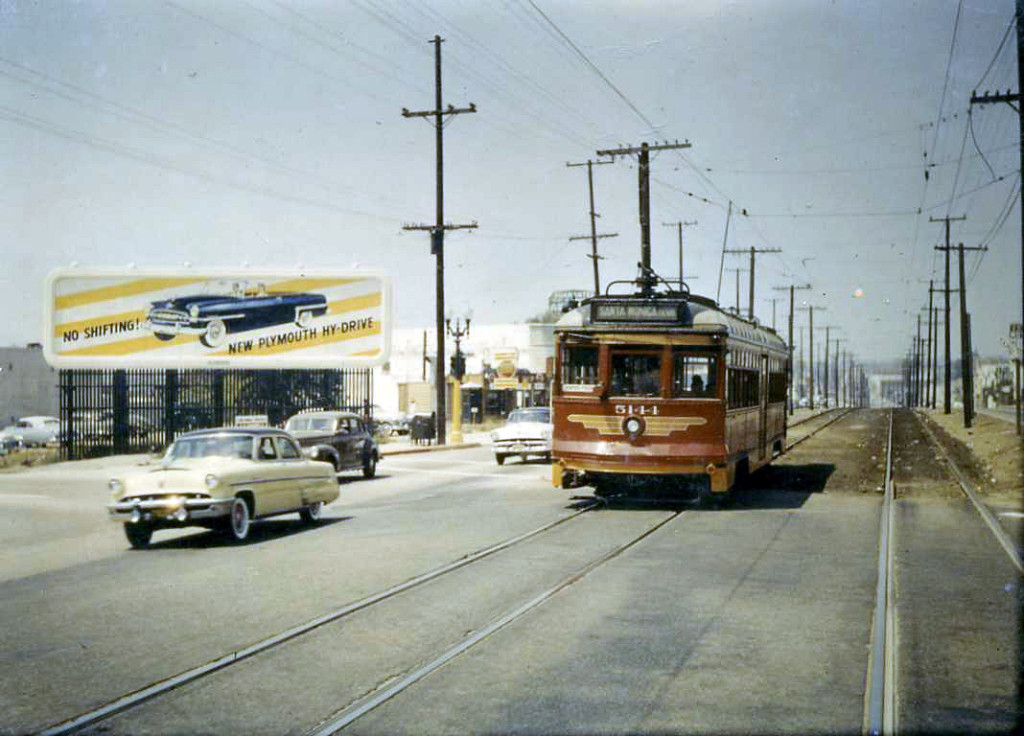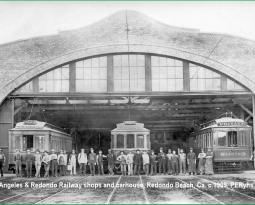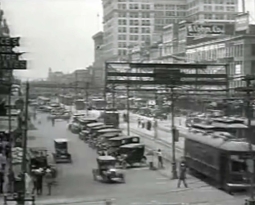Traction and the Enemy
By Ralph Cantos
Pacific Electric car no. 5144 sparkles in the mid-day sun on this very sad day, May 31, 1953. This is the last day of rail service along Santa Monica Blvd. east of Fairfax Ave.
As evident by the billboard on the corner of Santa Monica and La Cienega Blvds. touting the 1953 Plymouth with NEW HY-DRIVE transmission, and the 1953 Mercury Monterey convertible racing no. 5144, times for traction lines all over America are only going to get worse, and it did!
Soon after the the Santa Monica Bl line abandonment, the #5144 would operate on the Hollywood Blvd, line for about another year. By the end of 1954, no. 5144 was in “dead storage” at Torrance Shops. By 1956, this beautiful Hollywood car, with years of productive service life left in its car body, would find its way to Terminal Island and be stacked like fire wood with almost 100 other sister Hollywood cars.
Ralph Cantos Collection






What a bummer 🙁
Indeed a sad day. As a regular rider of the Santa Monica Blvd and Hollywood Blvd lines the loss of rail service to the less comfortable buses made me look forward until I could get a car and not have to use the bus. If the red cars remained I for one would be riding more and driving less. The bus is not the same as riding rail, it is many steps below.
I used to save my lunch money at both Dayton Heights and Lockwood elementary schools and, on days of rainy day schedules, would ride the first outbound red car that stopped at the Cahuenga Branch of the Los Angeles Public Library (Madison Avenue and Santa Monica Blvd., IIRC). Thus, even in the 5th and 6th grade, I was able to explore those lines (much to my mother’s displeasure).
I even once got to Van Nuys and return on 20¢. The conductor was understanding, and I had the “railfan” seat both ways. I remember it to this day, and that had to have been in 1945 or 1946, no later than the Spring of 1947.
Although General Motors gets a lot of the blame for the almost-total disappearance of trolley cars in the US, I start with Henry Ford. His plants turned out over 15 million Model Ts, a low-priced reasonably reliable vehicle that owners could repair themselves. Then GM came along with the “trade-in/trade-up” marketing plan, and GMAC financing with its “pay as you drive” installment plans. As Ford owners upgraded their rides, second-hand “Flivvers” became the car for folks who couldn’t afford something new. And so it went….